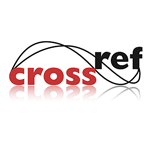The Eternal Fight against Cancer
Rania B Georges
DOI10.21767/2471-9641.100013
Rania B Georges*
Department of Pharmacology & Toxicology, Faculty of Pharmacy, Al-Baath University, Homs, Syria
- Corresponding Author:
- Rania B Georges
Department of Pharmacology & Toxicology
Faculty of Pharmacy at Al-Baath University Homs, Syria
Tel: 963 319910 1994
E-mail: rania.georges@hotmail.de
Received date: January 27, 2016; Accepted date: February 03, 2016; Published date: February 10, 2016
Citation: Georges RB. The Eternal Fight against Cancer. J Med toxicol clin forensic med. 2016, 1:3.
Citation: Georges RB. The Eternal Fight against Cancer. J Med toxicol clin forensic med. 2016, 2:1.
“Cancer may have started the fight, but we should finish it”.
When talking about cancer, many questions come to one’s mind; how long have humans known cancer? Did they fight it and how? Is cancer a treatable disease? How far did we get in fighting this disease? To name a few.
Humans have had cancer throughout documented history; hence it is no surprise that people have written about this deadly disease through ancient history. The Edwin Smith Papyrus, the oldest description of cancer, was discovered around 3000-2500 BC in Egypt describing 8 breast tumors that were eradicated by cauterization with a fire drill. As expected back then, the statement of the Egyptian writers about the disease was, “There is no treatment” [1].
Providentially, the scientific advances since then made this statement to a great extent incorrect, despite the fact that the development of cancer treatment is considered to be a slow process compared to the progression achieved in different scientific fields; medicine, (bio)chemistry, (molecular) biology and genetics.
The journey of cancer treatment endeavors began with surgery, although ancient surgeons had actually believed that cancer would usually come back after it was surgically removed.
Hormone therapy is another 19th century breakthrough, which paved the way for an important new method to treat and prevent breast and prostate cancers.
In the same period, the first Nobel Prize in physics was awarded in 1901 to the German professor Wilhelm Conrad Roentgen for his invaluable discovery of ‘X-ray’ conceiving radiation therapy as another essential diagnosis and treatment solution for cancer [1].
Seven years later, a second German scientist, Paul Ehrlich, was awarded Nobel Prize in Physiology or Medicine for his landmark immunological achievements leading eventually to Ehrlich’s ‘magic bullet concept’: drugs that go directly to their anticipated cellular targets, which earned him his famous title ‘the founder of chemotherapy’ [2].
Another step forward towards the development of cancer chemotherapy was accidentally achieved during World War II, as it was noticed that military personnel exposed to mustard gas had profound lymphoid and myeloid suppression, as revealed by their bone marrow autopsies. This was translated medically by using mustard gas compounds and similar cross-linking agents for the treatment of lymphoma and other cancer types [2].
Conventional chemotherapeutic anticancer drugs, such as antimetabolites, deoxyribonucleic acid (DNA)–alkylating and cross-linking agents, anti-microtubule agents and topoisomerase inhibitors, focus mainly on targeting DNA processing and cell division.
Despite their effectiveness in certain cancers, the lack of selectivity of these drugs for tumor cells versus normal cells usually leads to pervasive side effects, such as alopecia, myelosuppression and gastrointestinal toxicity, making their use as bothersome as the cancer itself-at least from the view point of the patient.
In the context of harmful side effects of anticancer therapy, we should definitely mention the large group of biologic agents or biological response modifiers (BRMs), represented mainly by interferons, interleukins and antibodies.
By imitating some of the natural signals used in the body to control cell growth, these agents mimic or influence the natural immune response, so that they directly alter the cancer cell growth or act indirectly to help healthy immune cells control the cancer. Furthermore, cancer vaccines, an important member of the immunotherapy drug family, are under the scope currently. They are used prophylactically as Engerix-B® for hepatocellular carcinoma and Gardasil® for cervical cancer or therapeutically as the recently 2010-FDA approved Sipuleucel-T (Provenge®) vaccine for metastatic hormone refractory prostate cancer [3].
Seeking to avoid and evade the above mentioned obnoxious side effects, a new era for anticancer drugs has dawned with the revolution of molecularly targeted agents. These drugs work mainly in 3 different mechanisms; targeting one or more steps in a signal transduction pathway unique to or de-regulated in cancer cells. The delegate of this group is the tyrosine kinase inhibitors (TKIs) represented by imatinib (Gleevec®), gefitinib (Iressa®) [4], cetuximab (Erbitux®) and trastuzumab (Herceptin®) [5].
Imatinib, the drug that corroborated the strategy of signal transduction inhibition, is categorized as a small molecule drug used for the treatment of chronic myelogenous leukemia (CML), by targeting deregulated/mutant BCR-ABL kinase in Philadelphiachromosome- positive CML cells.
Another leader example in the TKI family is the recombinant, humanized monoclonal antibody (mAb); trastuzumab (Herceptin®). This mAb targets the human epidermal growth factor receptor 2 (HER2)/neu signaling pathway and provides significant benefits to HER2+-breast cancer patients.
The second strategy for targeted therapy is inhibition of angiogenesis (new blood vessel formation) in cancer tissue to cut blood supply; hence prevent oxygen and nutrients from arriving to tumor cells. This category is led by the 2004 FDA-approved mAb; bevacizumab (Avastin®), used for the treatment of advanced colorectal, lung and kidney cancers [3].
The third key strategy is inducing apoptosis in cancer cells by using modulators of caspase (cysteine-aspartic proteases)-dependent apoptotic pathways [6].
These targeted therapies are typically more selective, less harmful than their older counterparts and some of them can even be given orally to treat cancer as if it were a chronic disease.
All examples mentioned above have led the trend of molecularly targeted drugs, but still on the protein level.
As our knowledge has reached an important game-changer; deciphering the genetic code, thanks to the outcomes of the Human Genome Project (HGP), our capabilities and perspectives grew in parallel. This huge project, achieved in 2003 [7], opened the door for even more targeted therapeutics; i.e., on the DNA/RNA level. On one hand, many new drug targets had been identified, and on the other hand, a variety of DNA/RNA-dependent therapeutics had emerged and is being developed.
At the top of the list, small interfering RNA (siRNA) and Clustered regularly-interspaced short palindromic repeats (CRISPR) represent the new era of therapeutic gene/genome editing approaches [8]. These two powerful molecularly-targeted techniques were developed from natural defense mechanisms in eukaryotes (siRNA) and prokaryotes (CRISPR) in order to specifically suppress the expression of disease-causing gene(s). As for 2014, according to the database of clinical trials (ClinicalTrials. gov), over 50 siRNA-based therapeutics have reached the clinical trial stage for the treatment of a wide variety of diseases including cancers, infections, cardiovascular diseases and genetic disorders [9]. Now the race between pharmaceutical companies begins to produce CRISPR-based drugs as well.
In addition to the two above mentioned genetic-targeting techniques, antisense-oligonucleotide (ASOs), although being under investigation for over 30 years, only two approved drugs were achieved. Those are, fomivirsen (Vitravene®), FDA approved in 1998 for the treatment of cytomegalovirus (CMV) retinitis in patients with AIDS, but discontinued for low demand, and mipomersen (Kynamro®), FDA approved in 2013, targeting ApoB100 for the treatment of homozygous familial hypercholesterolaemia (HoFH), a rare genetic disorder with excessive levels of low-density lipoprotein (LDL) cholesterol [10].
There are multiple hurdles faced with the use of these large, negatively charged oligonucleotides especially in vivo; stability, efficient drug delivery to target issue/cells and, efficient cellular delivery and uptake limiting to a large extent their FDA approval and widespread application. Therefore, much of the work practiced in this field is and should be focusing on these obstacles in order to deliver efficient drugs to the market and most importantly to the patient [11].
To conclude, if we wanted to answer the question, how far did we get in fighting this disease? I think, we could without hesitation say that we have gotten deeply far in this fight, but there is still a lot of work and efforts yet to be done; specifying new and functional drug targets, developing efficient drug delivery systems, employing rational drug design and not to forget the production of high-quality animal models for the various stages of drug testing.
References
- Sudhakar A (2009) History of Cancer, Ancient and Modern Treatment Methods. J Cancer Sci Ther 1: 1-4.
- Strebhardt K, Ulrich A (2008) Paul Ehrlich's magic bullet concept: 100 years of progress. Nat Rev Cancer 8: 473-80.
- Liu JK (2014) Anti-cancer vaccines - a one-hit wonder? Yale J Biol Med 87: 481-9.
- Wu P, NielsenTE, Clausen MH (2015) FDA-approved small-molecule kinase inhibitors. Trends Pharmacol Sci 36: 422-39.
- Dillman RO (2011) Cancer immunotherapy. Cancer Biother Radiopharm 1: 1-64.
- Okun I, Balakin KV, Tkachenko SE, Ivachtchenko AV (2008) Caspase activity modulators as anticancer agents. Anticancer Agents Med Chem 8: 322-41.
- Collins FS, Morgan M, Patrinos A (2003) The Human Genome Project: lessons from large-scale biology. Science 300: 286-90.
- Porteus MH (2015) Towards a new era in medicine: therapeutic genome editing. Genome Biol 16: 286.
- Burnett JC, Rossi JJ (2012) RNA-based therapeutics: current progress and future prospects. Chem Biol 19: 60-71.
- Moreno PM, Pego AP (2014) Therapeutic antisense oligonucleotides against cancer: hurdling to the clinic. Front Chem 2: 87.
- Wittrup A, Lieberman J (2015) Knocking down disease: a progress report on siRNA therapeutics. Nat Rev Genet 16: 543-52.

Open Access Journals
- Aquaculture & Veterinary Science
- Chemistry & Chemical Sciences
- Clinical Sciences
- Engineering
- General Science
- Genetics & Molecular Biology
- Health Care & Nursing
- Immunology & Microbiology
- Materials Science
- Mathematics & Physics
- Medical Sciences
- Neurology & Psychiatry
- Oncology & Cancer Science
- Pharmaceutical Sciences
